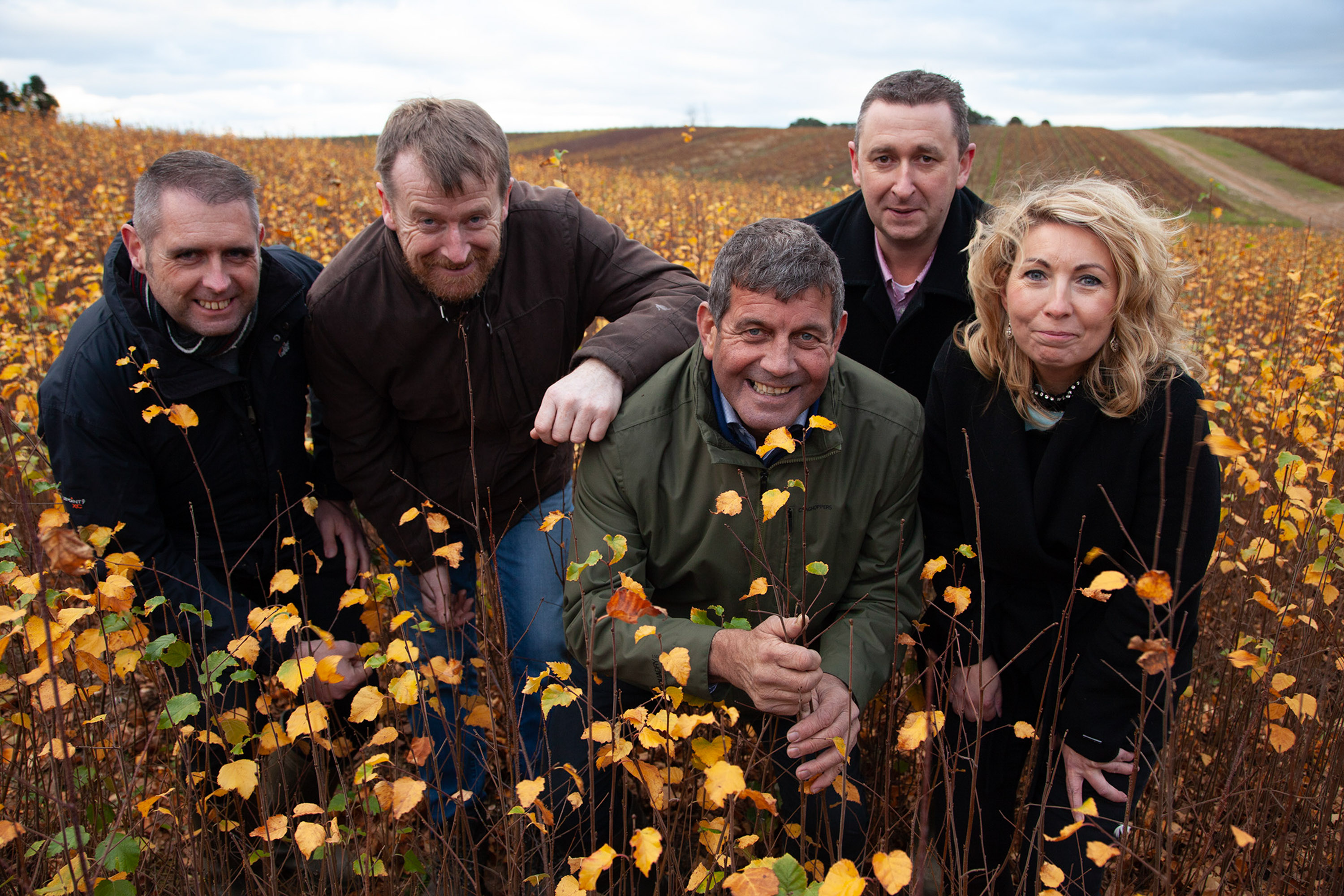Published on
Minster Andrew Doyle launches commencement of the forestry planting season

The Minister of State at the Department of Agriculture, Food and the Marine, Mr. Andrew Doyle, T.D., today launched the start of the 2018-19 forestry planting season during a visit to tree nursery in Ballymurn, Co. Wexford. This nursery belongs to the None-So-Hardy company and is their specialist broadleaf nursery from where almost 5 million broadleaf trees will be dispatched during the coming planting season.
Speaking at the launch, the Minister Doyle commented:
“It’s appropriate that the opening of this year’s planting season is announced at a tree nursery specialising in broadleaf tree production, given the huge uplift in broadleaf planting so far this year. Planting of broadleaf trees are 25% higher than last year and is a direct result of higher grant and premium afforestation rates introduced by my Department earlier this year under the midterm review of the State’s Forestry Programme. This highlights the diversity within the Programme where funding is available for planting to woodland restoration to woodland recreation amenities. It also highlights the significant environmental benefits which the Programme continues to deliver”.
The nursery at Ballymurn has 15 million broadleaf plants in production, the vast majority of which are destined for the afforestation scheme. In fact 5 million will be lifted during the planting season announced today by Minister Doyle. The Minister highlighted in particular the level of new Native Woodlands establishment during 2018. Minister Doyle commented
“The planting of native woodlands so far in 2018 has exceeded 300 hectares, representing a 130% increase on the first year of our Forestry Programme in 2015. I understand from None-So-Hardy that they have collected some 12 tonnes of acorns locally in the past two years, all of which will supply an increasing demand from landowners to plant native species”.
The Afforestation Scheme is the cornerstone of the Department of Agriculture’s policy to develop a sustainable forest sector that delivers economic, environmental and social benefits to society. During the visit the Minister highlighted the important economic contribution that forestry makes in rural communities across the country. The Minister said that:
“Last year over 13,000 farmers across the country received nearly €68 million in forestry premium payments and €25m revenue from timber sales. I would encourage farmers to consider forestry as part of the farming mix, an opportunity to diversify the income stream and a means of increasing production of under-utilised land. Applications are now invited under the Scheme under which 100% of the costs of establishment are covered by the Department and 15 guaranteed annual premium payments are also available”.
Notes for the editors
Information about the Afforestation Scheme, including the range of categories and associated rates of premium, on the Department’s website at: https://www.agriculture.gov.ie/media/migration/forestry/grantandpremiumschemes/2016/AfforestationPDF220816.pdf
Interested landowners may also contact Teagasc for further information at: https://www.teagasc.ie/crops/forestry/
Top Forestry Facts
1. The national forest estate is still expanding and has now reached 11% of the total land area, with a wide variety of forest types present. The total forest area has increased from 697,842 hectares (ha) in 2006 ha to 770,020 ha in 2017.
2. Broadleaved species account for 28.7% of the total forest area. The share of broadleaf species in the national forest estate has increased by 3% between 2013 and 2017.
3. 26% of all trees planted so far in 2018 were broadleaves. Almost 900 hectares of broadleaves have been planted during this time.
4. As a % of total forest cover by county, Meath has the largest broadleaf cover in the country at 72%, it also the highest % of forests in private ownership at 76% of all forests in the county.
5. The highest annual premium payable under the afforestation scheme is for native woodlands and is €275/acre or €680/hectare payable each year for 15 years.
6. The Department has introduced a Woodland Environmental Fund that provides an access point for business to further incentivise land owners to plant Native Woodland. Under this new initiative business provide a once off top up payment of €1,000/ha to the landowner. Details can be found at https://www.agriculture.gov.ie/media/migration/forestry/grantandpremiumschemes/2018/DAFMWEFleaflet14Sept18250918.pdf
7. 100% of the cost of establishing the new forest is covered by the grant paid by the Department of Agriculture, Food and the Marine.
8. Forestry is compatible with other agriculture schemes. Farmers can continue to receive their Basic Payment on land which is also planted. Forestry and GLAS can exist side by side on the same farm once land parcels being considered for forestry do not have GLAS activities associated with them.
9. Agro forestry is available under the afforestation scheme for farmers who wish to continue to graze the land while also growing trees on the same land. The planting of poplar or eucalyptus for fuel is a good option for farmers who want a quick return on their forestry investment. Forests planted under this Scheme can be felled after 10-15 years and a premium payment of up to €520 / hectare is payable for each year up to harvesting at year 15.
10. Timbers sales from private forest owners were estimated at over €25m last year. A recent change in taxation rules means that income from forestry clear-felling is tax free.